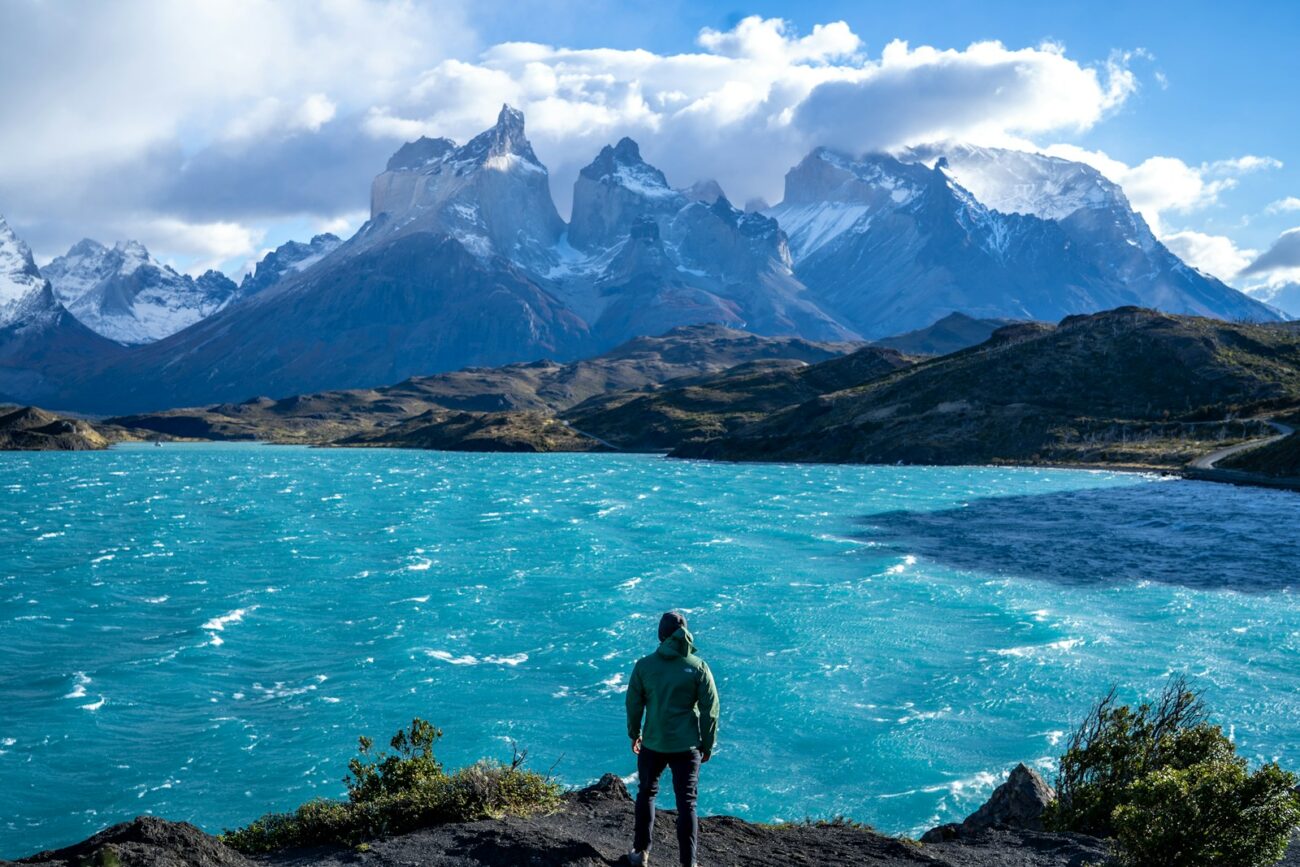For American hiking enthusiasts seeking transformative outdoor experiences beyond domestic trails, three international destinations consistently rank at the top of bucket lists: Nepal, Patagonia, and Iceland. These regions offer dramatically different landscapes, cultural experiences, and physical challenges that appeal to U.S. trekkers looking to expand their horizons. Each destination provides a unique combination of accessibility, extraordinary natural beauty, well-established trekking infrastructure, and experiences impossible to replicate elsewhere on Earth. From the towering Himalayan peaks of Nepal to the wind-sculpted mountains of Patagonia and the otherworldly volcanic terrain of Iceland, these trekking paradises attract thousands of American adventurers annually who return home forever changed by their journeys. This exploration dives into why these three distinct regions have earned their reputation as ultimate pilgrimage sites for serious trekkers from the United States.
The Allure of International Trekking for American Adventurers
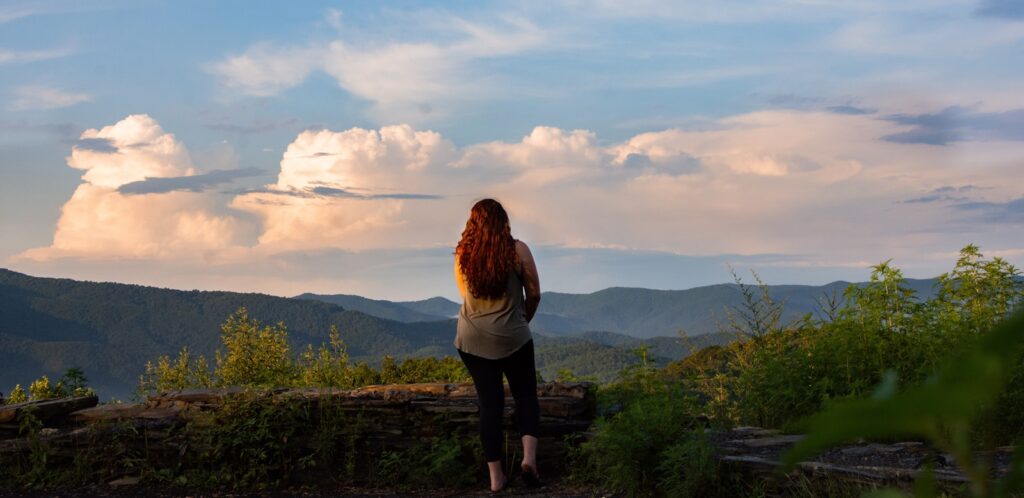
American trekkers increasingly look beyond domestic national parks to satisfy their wanderlust, seeking experiences that combine physical challenge with cultural immersion and dramatic landscapes. Despite the United States boasting impressive trail systems like the Appalachian and Pacific Crest Trails, international destinations offer distinctly different ecosystems, cultural contexts, and testing grounds for outdoor skills. For many U.S. adventurers, trekking abroad represents a perfect blend of physical adventure and meaningful cultural exchange, allowing them to step outside comfort zones while experiencing landscapes fundamentally different from those at home. The growing accessibility of once-remote regions through improved transportation networks and digital resources has made international trekking more approachable than ever for Americans. Additionally, the social currency and personal growth that comes from these challenging expeditions continues to drive U.S. trekkers to seek adventures in these iconic global destinations.
Nepal: Trekking in the Shadow of Giants
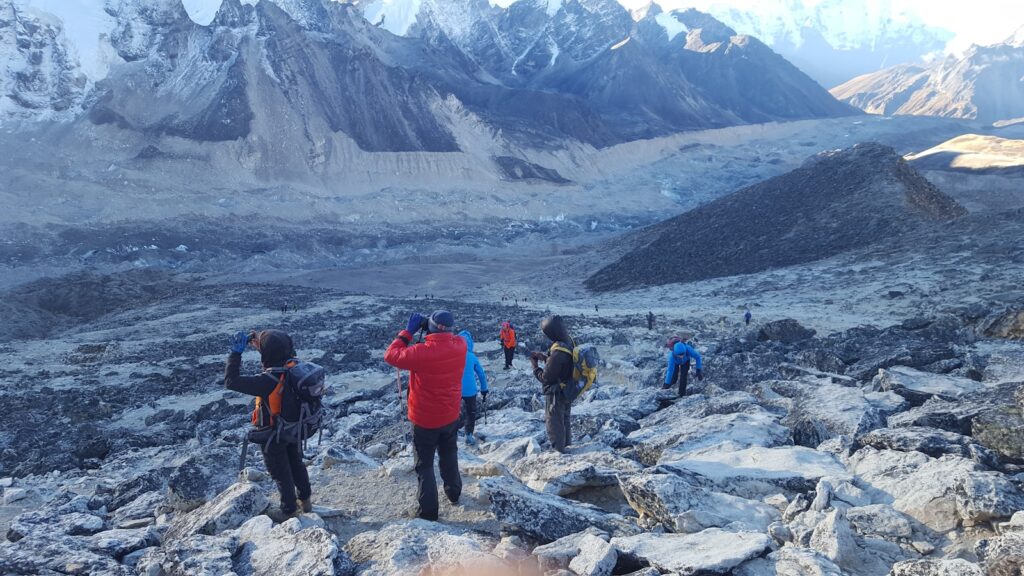
Nepal stands as the quintessential trekking destination, offering Americans the chance to walk ancient footpaths beneath the world’s highest mountains. The Everest Base Camp trek and Annapurna Circuit have achieved legendary status among international hikers, combining challenging high-altitude trails with immersive experiences in traditional Sherpa and Tibetan Buddhist cultures. American trekkers are drawn to Nepal’s unique tea house trekking system, which allows hikers to journey for weeks through remote mountain regions while sleeping in basic but comfortable lodges run by local families, eliminating the need to carry heavy camping equipment. The spiritual dimension of Himalayan trekking also resonates deeply with many U.S. visitors, as prayer flags flutter alongside trails dotted with monasteries and stupas that have stood for centuries. For Americans accustomed to wilderness devoid of human settlement, Nepal presents a fascinating alternative model where ancient cultures and dramatic landscapes have coexisted for millennia.
The Everest Region: America’s High-Altitude Obsession
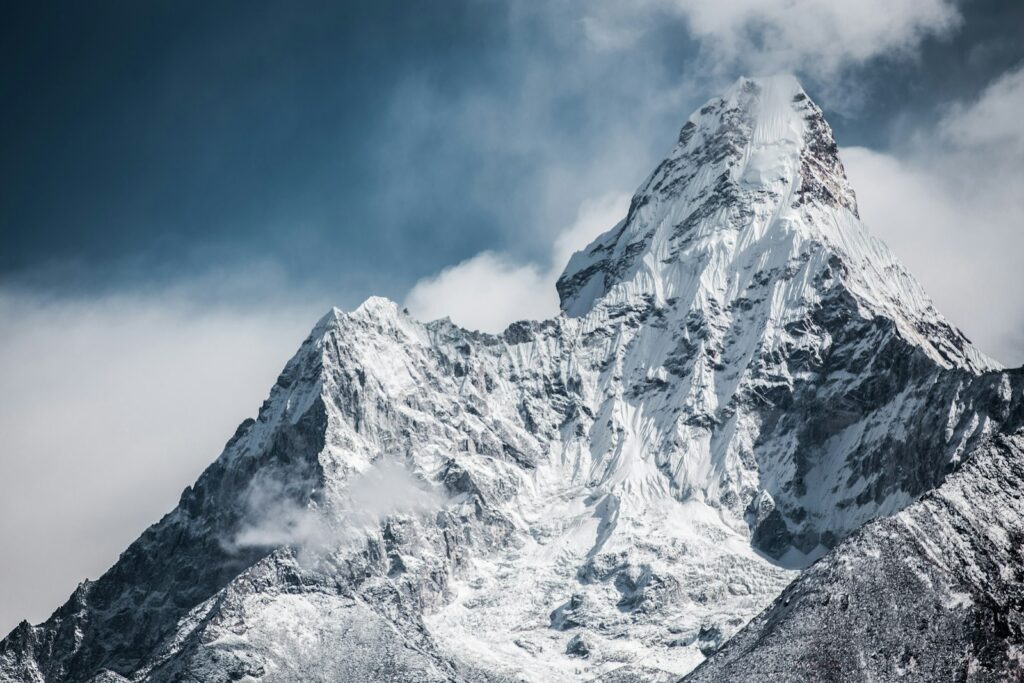
No mountain has captured the American imagination quite like Everest, making the trek to its base camp a powerful draw for U.S. adventurers. The journey begins with what many consider one of the world’s most dramatic flights into Lukla’s precarious mountaintop airstrip, immediately immersing trekkers in the scale and majesty of the Himalayas. American trekkers particularly appreciate the well-defined nature of the route, which allows them to experience extreme altitude (the trek reaches 18,193 feet at Kala Patthar) within a structured itinerary that permits proper acclimatization. The cultural aspects of the journey through the Khumbu region, homeland of the famous Sherpa people, provide Americans with insights into a society that has adapted to life in one of Earth’s most extreme environments. For many U.S. trekkers, standing at Everest Base Camp represents a profound bucket-list achievement that combines physical accomplishment with proximity to a mountain that has represented the ultimate adventure challenge since Americans first attempted to climb it in the 1960s.
The Annapurna Circuit: Nepal’s Premier Trek for American Hikers
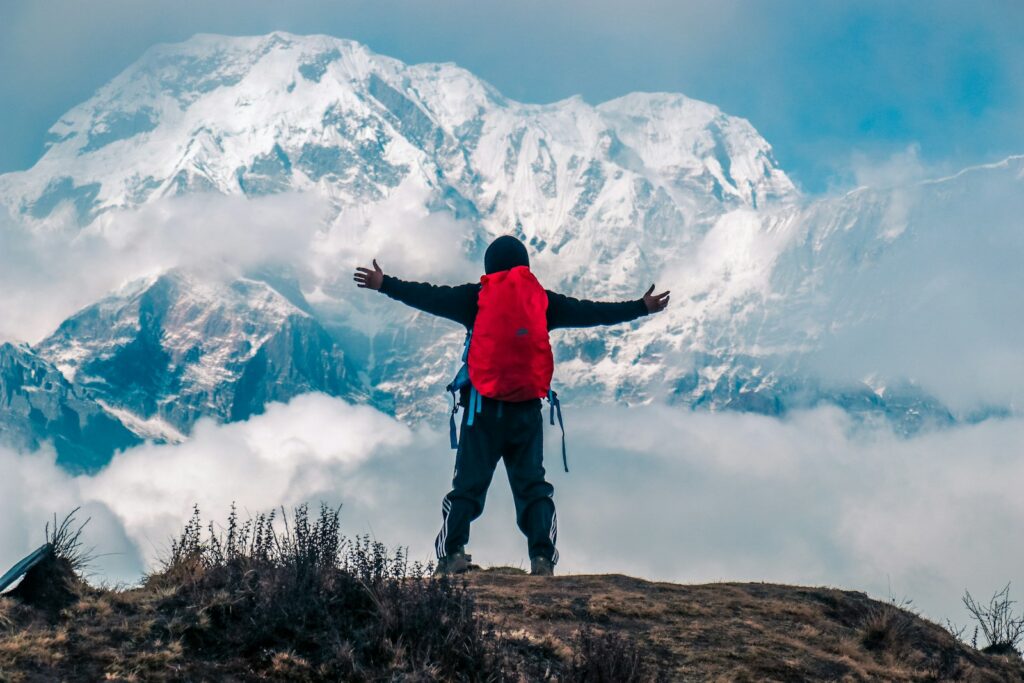
The Annapurna Circuit consistently ranks as a favorite among American trekkers for its unmatched diversity of landscapes, cultures, and ecosystems packed into a single journey. Unlike the out-and-back nature of the Everest trek, this route forms a complete circuit that crosses the challenging Thorong La pass at 17,769 feet, requiring trekkers to traverse through subtropical forests, arid high-desert plateaus, and everything in between. U.S. adventurers particularly value the cultural journey through regions influenced by Hindu traditions in lower elevations and Tibetan Buddhist culture higher up, offering multiple distinct experiences within a single trek. The accessibility of the Annapurna region, with its proximity to the tourist hub of Pokhara, makes logistics more straightforward for Americans planning their first Himalayan adventure. Many U.S. trekkers also appreciate the flexibility of the Annapurna region, which offers shorter alternatives like the Poon Hill trek for those with limited time or the full circuit for those seeking a more comprehensive experience typically taking 12-21 days.
Patagonia: Where Dramatic Landscapes Meet Solitude
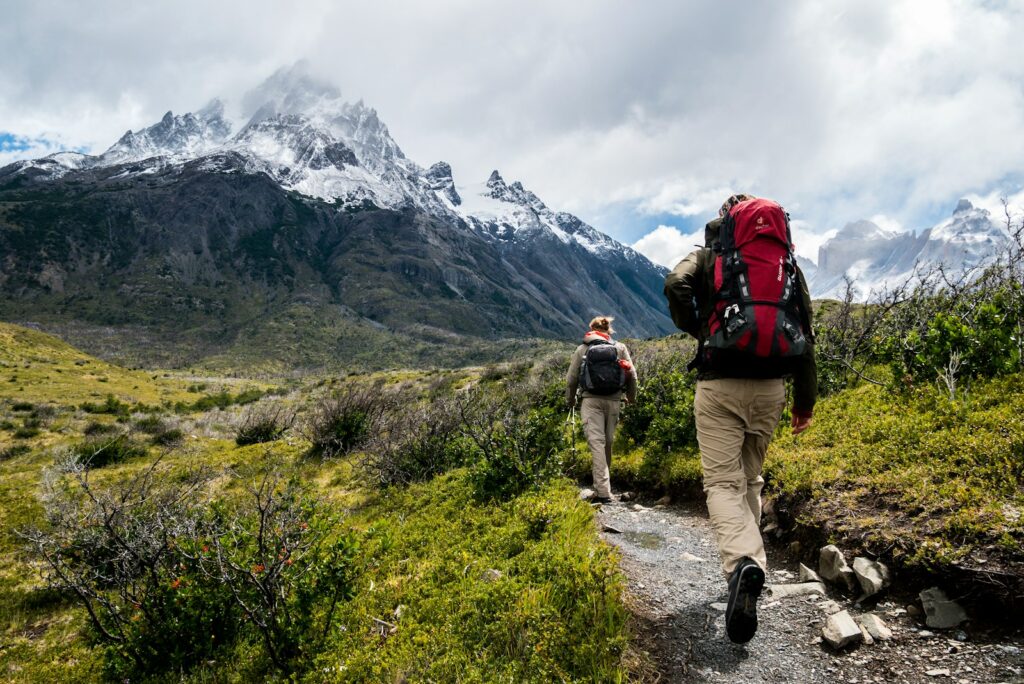
Patagonia’s wild, wind-swept terrain spanning the southern regions of Chile and Argentina has become a magnet for American trekkers seeking raw, elemental wilderness experiences. The region’s iconic granite spires, massive glacial fields, and relatively undeveloped character present a striking contrast to the more densely populated trekking regions of Nepal. American adventurers are particularly drawn to Patagonia’s combination of accessibility (with relatively easy flights to Santiago or Buenos Aires) and its sense of remoteness once on the trail. For U.S. trekkers accustomed to permit systems and crowded national parks, Patagonia offers a refreshing sense of solitude and self-reliance, even on its most popular routes. The region’s famously unpredictable weather adds an element of challenge that appeals to experienced American hikers looking to test their skills and equipment against genuine wilderness conditions. Additionally, the shared outdoor recreation values between North and South American cultures make Patagonia feel simultaneously foreign yet familiar to U.S. visitors.
Torres del Paine: Patagonia’s Crown Jewel for American Trekkers
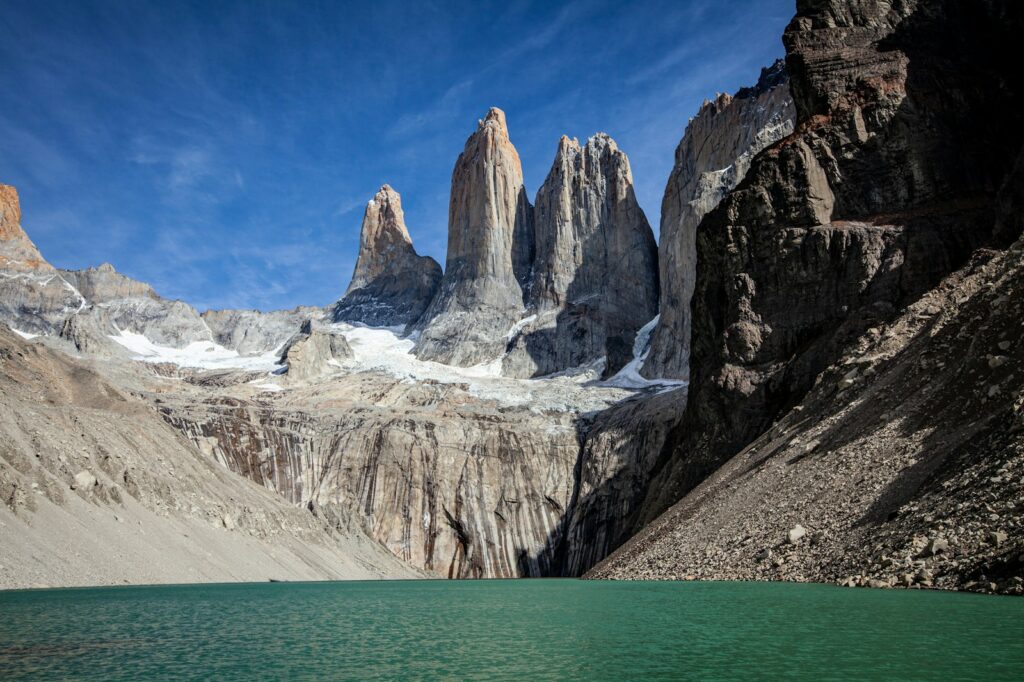
Torres del Paine National Park in Chilean Patagonia has emerged as the single most popular Patagonian destination for American hikers, offering perfectly balanced accessibility and wilderness experience. The park’s famous W and O Circuits provide clearly defined routes with established campgrounds and refugios (mountain huts), making logistics manageable while still delivering genuinely challenging trekking experiences. American visitors particularly appreciate the park’s photogenic landscapes, with the iconic granite towers, vast glaciers, and turquoise lakes creating scenes that have become synonymous with Patagonian adventure in U.S. outdoor media and social networks. The relatively compact nature of the park allows trekkers to experience dramatic scenery changes within short distances, maximizing visual payoff for effort expended—a significant consideration for Americans traveling long distances with limited vacation time. For many U.S. adventurers, Torres del Paine represents the perfect intermediate challenge: wild enough to feel genuinely adventurous but structured enough to be approachable for trekkers with moderate experience.
Los Glaciares National Park: Home to America’s Favorite Mountain
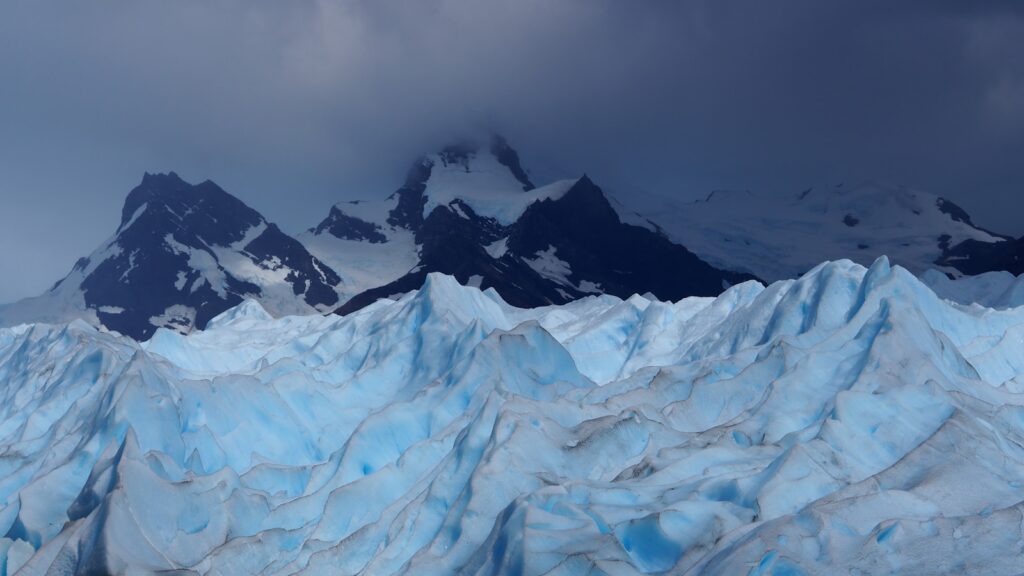
Argentina’s Los Glaciares National Park, centered around the town of El Chaltén, has captured the American hiking imagination largely through the perfect triangular spire of Mount Fitz Roy—a mountain that gained further recognition when it became the inspiration for the Patagonia clothing company’s logo. U.S. trekkers are drawn to the area’s unusual combination of world-class hiking directly accessible from a small frontier town, eliminating the need for complex transportation arrangements that characterize many international trekking destinations. The day-hike format of many Fitz Roy area trails appeals to American visitors who appreciate the flexibility to choose their daily activities based on weather conditions and physical readiness. For photography-oriented American trekkers, the region offers unparalleled opportunities to capture iconic mountain landscapes, particularly during the magical sunrise alpenglow that transforms Fitz Roy’s granite face to brilliant orange. Many U.S. visitors combine Los Glaciares with Torres del Paine to create a comprehensive Patagonian experience, appreciating the contrasting character of the Argentine and Chilean sides of the region.
Iceland: Volcanic Wonderland for American Trekkers
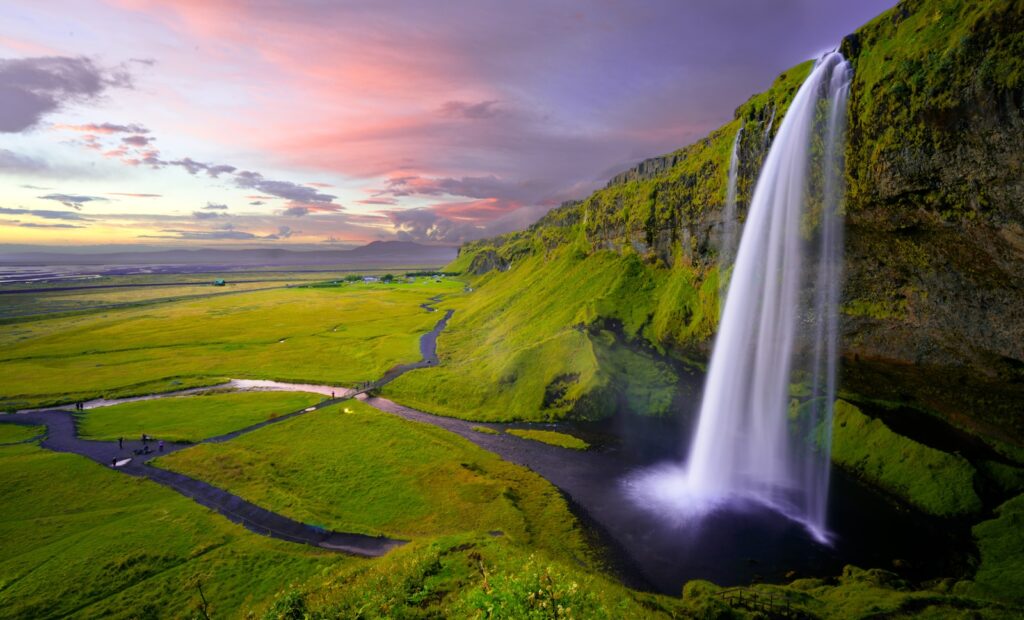
Iceland has experienced a meteoric rise in popularity among American trekkers, transformed from niche destination to bucket-list essential through a combination of improved air connections, social media exposure, and its genuinely unique landscape character. The island nation offers U.S. adventurers an otherworldly trekking environment of active volcanoes, geothermal features, black sand deserts, and massive glaciers, all within a compact area easily accessible from the East Coast. American hikers particularly value Iceland’s relatively short flight times from the U.S. (approximately 5-6 hours from East Coast cities), making it possibly to experience genuinely foreign landscapes without the jet lag and extended travel times required for Asian or deep South American destinations. The country’s excellent infrastructure, widespread English proficiency, and reputation for safety make it an ideal introduction to international trekking for less experienced American adventurers. Many U.S. trekkers are also drawn to Iceland’s midnight sun during summer months, which allows for extended hiking days and flexible scheduling not possible in most other destinations.
The Laugavegur Trail: Iceland’s Premier Trek for Americans
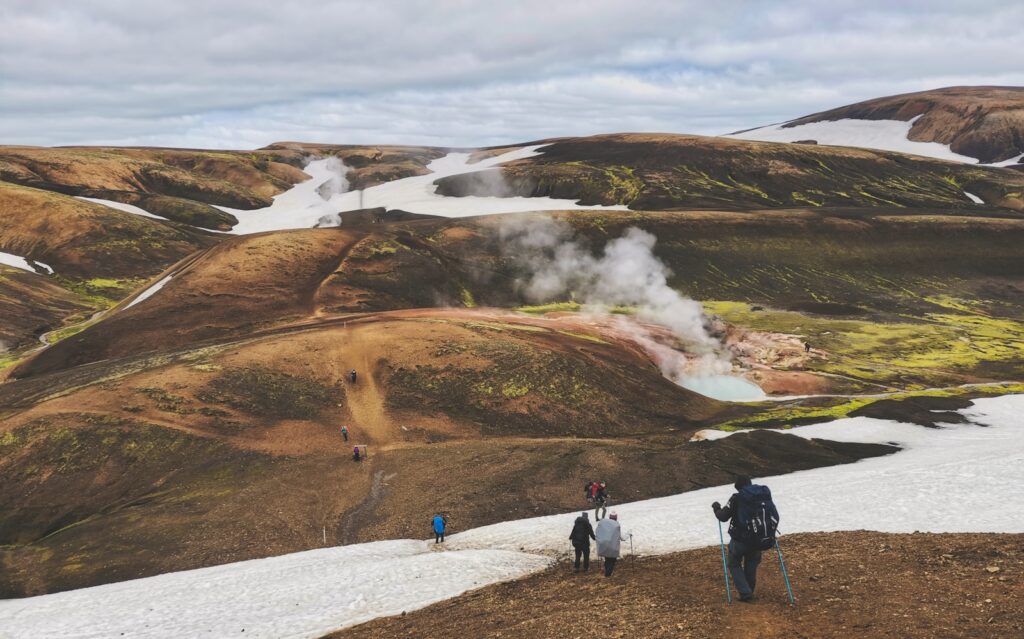
The 34-mile Laugavegur Trail has emerged as Iceland’s signature trek, offering American hikers an incomparable multi-day journey through kaleidoscopic rhyolite mountains, obsidian fields, bubbling geothermal areas, and glacier-fed river crossings. U.S. trekkers appreciate the trail’s well-maintained hut system, which provides shelter in a landscape where weather conditions can change rapidly, eliminating the need to carry heavy camping equipment through challenging terrain. The 4-5 day standard itinerary fits perfectly within the typical American vacation window, allowing visitors to complete a world-class trek and still have time to explore other parts of Iceland. For many American hikers, the Laugavegur represents their first experience with river fording—a common feature of Icelandic trails but relatively rare in the U.S.—adding an element of adventure and challenge. The trail’s southern terminus at Þórsmörk, a verdant valley nestled between three glaciers, provides a dramatic conclusion and transition from the stark highlands to Iceland’s more lush southern landscapes.
Accessibility Factors Driving American Trekkers to These Destinations
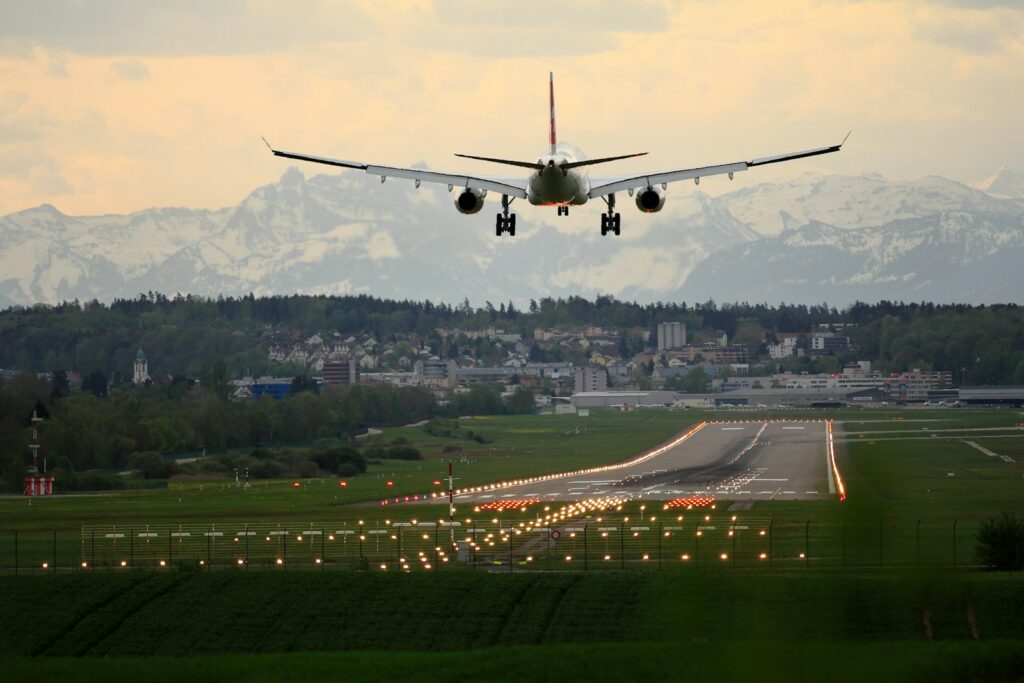
While seemingly remote, these three trekking paradises have developed infrastructure specifically catering to international visitors that makes them remarkably accessible to American adventurers. Direct flights connect major U.S. cities to Reykjavik, while Kathmandu and Santiago/Buenos Aires require just one connection from most American hubs, significantly reducing travel complexity compared to other international trekking destinations. The well-established tourism economies in all three regions have created English-speaking guides, detailed online resources, and specialized trekking agencies that can arrange everything from airport pickups to full-service guided experiences, addressing the planning challenges that might otherwise deter U.S. travelers. Each destination has also developed tiered experience options, from luxury guided treks with porters to bare-bones independent adventures, allowing Americans of varying experience levels and budgets to find appropriate options. Additionally, all three regions benefit from political stability and relatively straightforward visa processes for U.S. citizens, eliminating bureaucratic hurdles that complicate travel to some other premier trekking destinations.
Seasonal Considerations for American Trekkers
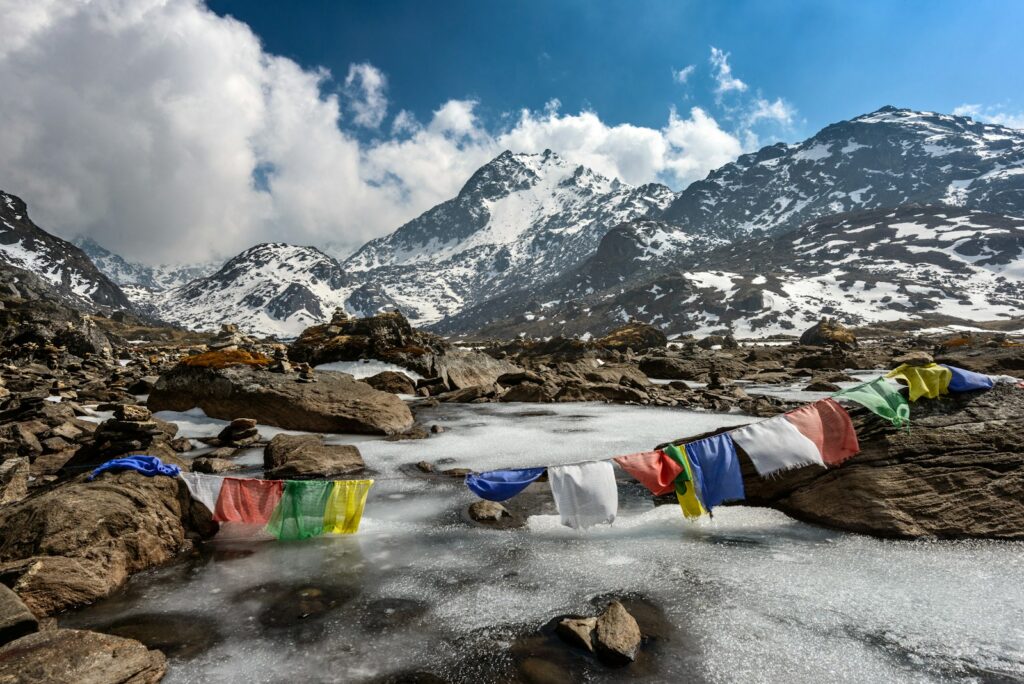
The complementary trekking seasons of these three destinations create perfect year-round opportunities for American adventurers to plan international expeditions. Nepal’s prime trekking seasons (October-November and March-April) align perfectly with shoulder seasons in the U.S. when many Americans have flexibility to travel outside peak summer vacation periods. Patagonia’s trekking season (December-February) coincides with winter in the Northern Hemisphere, allowing U.S. trekkers to escape cold weather for southern summer adventures during holiday breaks. Iceland’s optimal hiking period (June-August) matches traditional American summer vacation schedules, making it a convenient international option during peak domestic travel times. This seasonal distribution allows dedicated American trekkers to potentially experience all three destinations within a single year without weather compromises. Many U.S. adventurers strategically plan their international trekking calendar around these complementary seasons, targeting Iceland for summer adventures, Nepal for fall or spring expeditions, and Patagonia for winter escapes from North American cold.
Cultural Immersion: Beyond the Physical Challenge
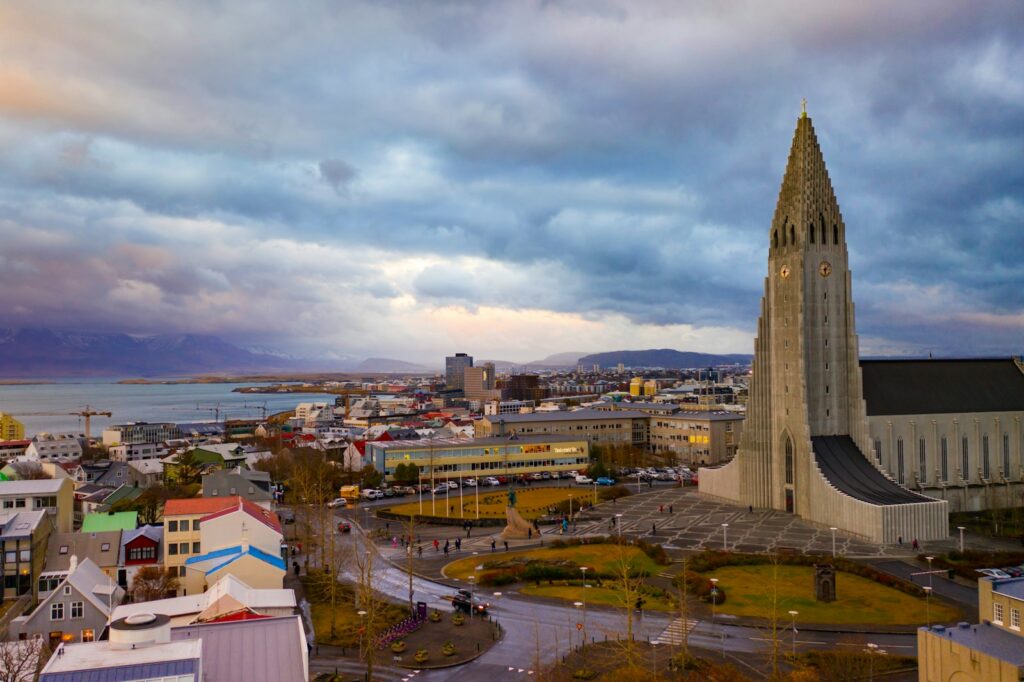
For American trekkers, these three destinations offer cultural experiences as transformative as their physical challenges, providing context and meaning beyond scenic vistas. Nepal’s trails pass through villages where traditional Himalayan life continues largely unchanged, allowing hikers to experience Buddhist monasteries, participate in tea house conversations with local guides, and witness ceremonies and festivals that connect them to centuries-old traditions. Patagonia offers insights into gaucho culture and the unique frontier history of southern South America, with opportunities to experience traditional asados (barbecues) and mate rituals that form the backbone of regional identity. Iceland’s trails traverse landscapes deeply connected to Norse mythology and saga literature, with local guides often sharing folk tales about elf houses and hidden people believed to inhabit specific rock formations passed along the trail. These cultural dimensions transform what might otherwise be purely physical challenges into more holistic experiences that American trekkers consistently cite as the most meaningful aspects of their journeys. Many U.S. adventurers report that these cultural encounters fundamentally shifted their perspectives on their own lifestyles and values upon returning home.
Responsible Trekking: Growing Environmental Awareness
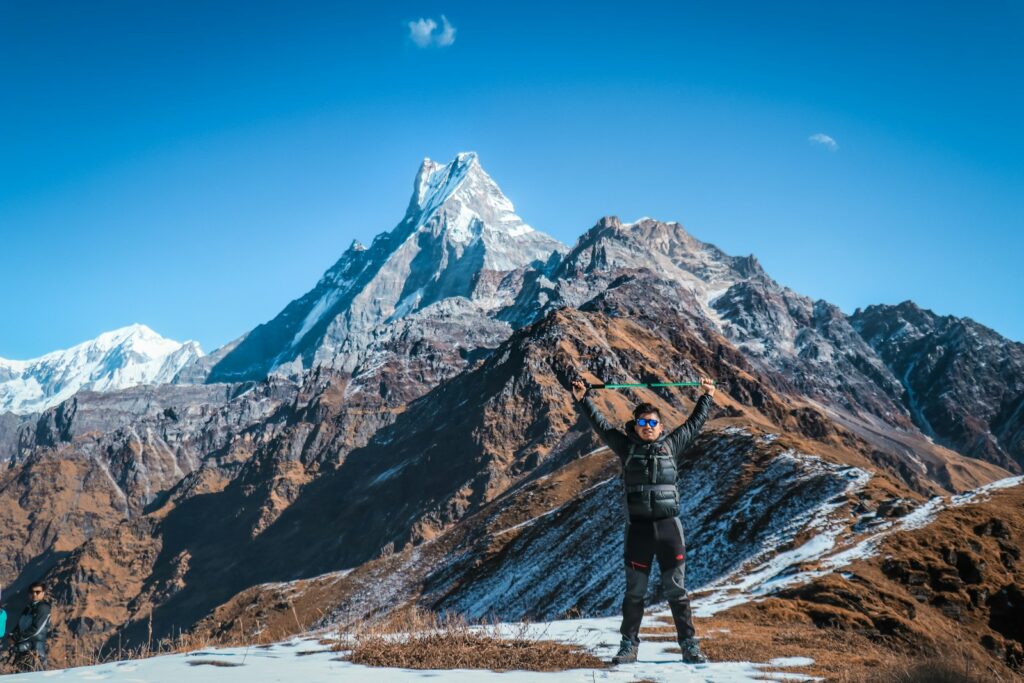
American trekkers increasingly prioritize environmental sustainability when selecting international destinations, and all three regions have responded with varying approaches to conservation. Nepal has implemented systems like the Sagarmatha Pollution Control Committee to address waste management challenges in the Everest region, while the Annapurna Conservation Area Project represents one of Asia’s most successful integrated conservation and development initiatives. Patagonia’s national parks, particularly Torres del Paine, have developed strict fire regulations and trail management protocols following unfortunate incidents involving careless international visitors in the past. Iceland has responded to its tourism boom with infrastructure development at popular sites, implementation of trail restoration programs, and public education about fragile volcanic environments. U.S. trekkers increasingly seek out operators committed to leave-no-trace principles, fair treatment of porters and guides, and authentic engagement with local communities. This growing emphasis on responsible trekking has created market pressure for higher environmental and ethical standards throughout the trekking industry in all three regions, a development many American adventurers actively support through their booking choices.
The Future of American Trekking in These Paradises
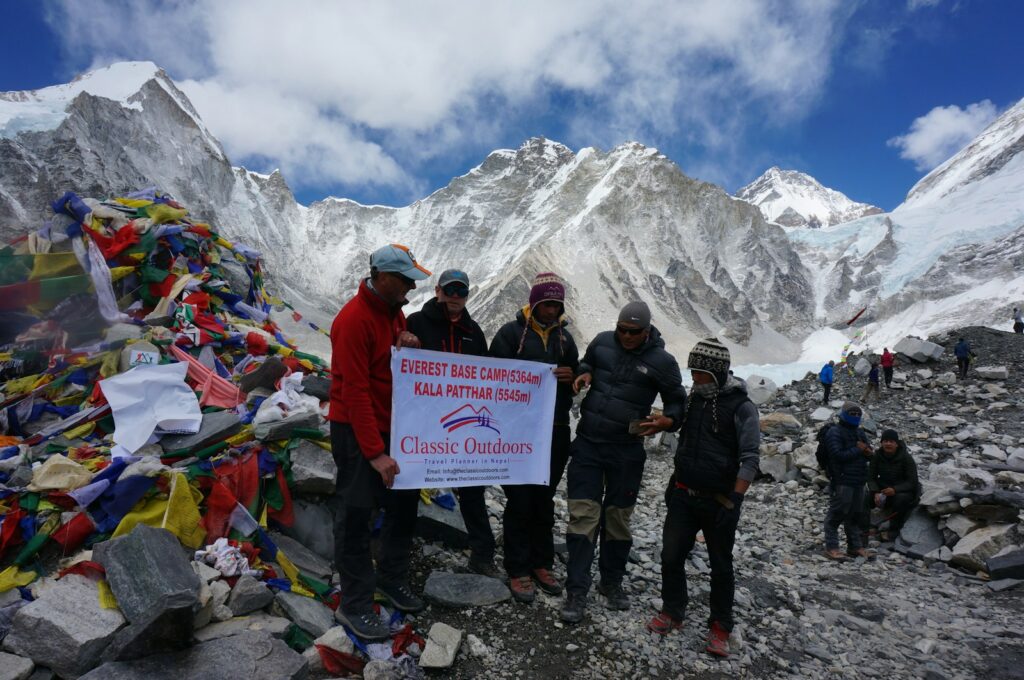
As international adventure travel continues to evolve, these three trekking paradises face both challenges and opportunities in maintaining their appeal to American adventurers. Climate change presents existential threats to all three destinations, with Nepal’s glaciers retreating, Patagonia’s ice fields shrinking, and Iceland’s unique glacial features diminishing at measurable rates. Overtourism concerns have emerged in specific areas like Everest Base Camp, Torres del Paine during peak season, and Iceland’s most accessible natural wonders, prompting management responses ranging from permit systems to price increases designed to manage visitor numbers. Simultaneously, each region continues developing new trekking routes and experiences that distribute visitors beyond the most famous trails, creating opportunities for American trekkers seeking less crowded alternatives. The growing emphasis on sustainable adventure tourism models has also sparked innovation in all three destinations, with development of climate-friendly accommodations, improved waste management systems, and more equitable economic models that better distribute tourism benefits to local communities. For future American trekkers, these destinations will likely remain premier adventure locations, though experiencing them responsibly may require more advanced planning, higher budgets, and greater flexibility than in previous decades.
For American adventurers seeking transformative outdoor experiences, Nepal, Patagonia, and Iceland represent the perfect trifecta of international trekking destinations, each offering distinct landscapes, challenges, and cultural dimensions impossible to find elsewhere. The continued appeal of these regions speaks to their unique combinations of accessibility, established infrastructure, extraordinary natural beauty, and the profound personal growth that comes from challenging oneself in unfamiliar environments. As international travel evolves in response to environmental and social pressures, these three trekking paradises continue adapting to remain both accessible and sustainable for future generations of American trekkers. For those willing to venture beyond domestic trails, these destinations offer rewards that extend far beyond spectacular photographs—they provide opportunities for deeper connection with

